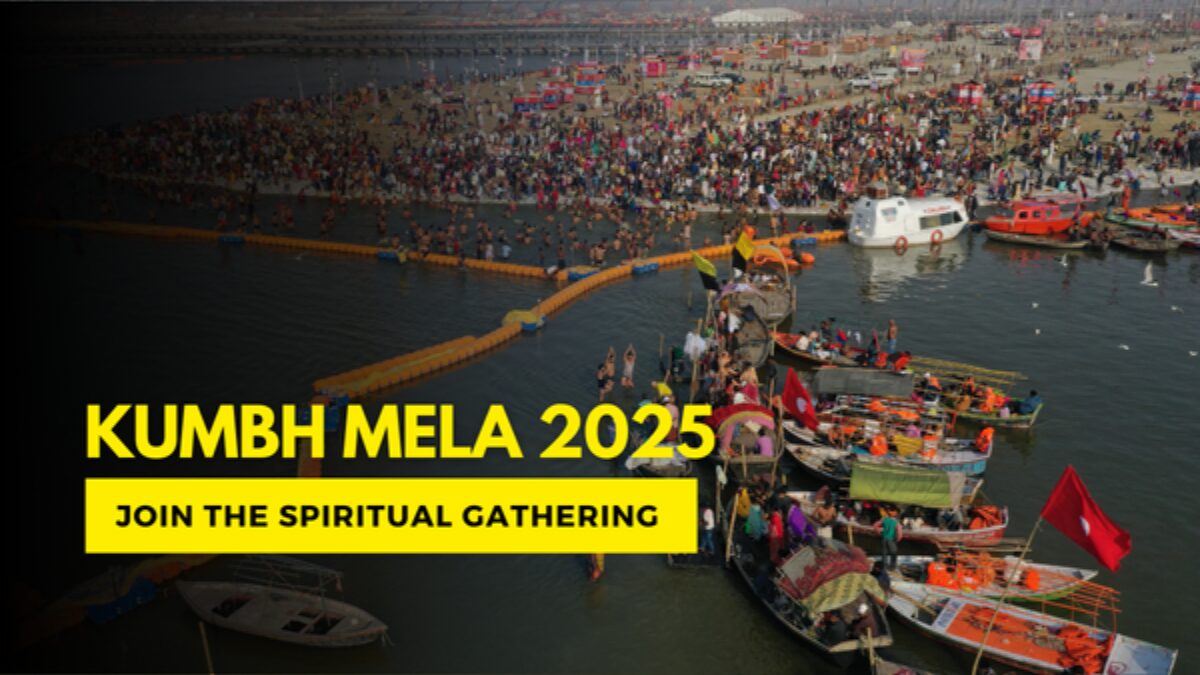
Recently, the Maha Kumbh Mela has been receiving significant coverage in the news as part of current affairs. Since mythology is one of my favorite subjects, I decided to dive deeper into it and began writing this blog. The Maha Kumbh Mela is a sacred festival that centers around the pavitra kalash (sacred pitcher) in Hindu mythology.
Devotees hold this religious pilgrimage on the banks of four holy rivers in India. As it symbolizes the victory of gods over demons. It provides a special opportunity for devotees to bathe in the holy waters, purifying their souls.
Held every 12 years, the Maha Kumbh Mela rotates between four locations: Allahabad, Haridwar, Ujjain, and Nashik. Attracting millions of people from all walks of life—regardless of caste, creed, or gender. It is the largest religious gathering in the world and remains one of India’s most significant spiritual events.

Mahakumbh Mela this year in 2025 held at Prayagraj, Uttar Pradesh. The festival includes rituals such as the Ganga Aarti, where floating diyas are offered to the river. Now we will talk about how this festival started or how this became the most spiritual event in our country.
History of Maha Kumbha
The Samudra Manthan (churning of the ocean) is a pivotal event in Hindu mythology. The Devas (gods) and Asuras (demons) united to obtain the Amrit (Nectar of Immortality). However to achieve this, they collaborated to churn the vast Kshirsagar, also known as the Ocean of Milk. In this churning process, the gods and demons used Mount Mandar as the churning rod and the serpent Vasuki as the rope.
Along with the Amrit, many divine objects emerged from the ocean. It included Goddess Lakshmi, Lord Chandra (the Moon), and the Kamdhenu (divine cow). At last, the Amrit (nectar of immortality) emerged. Lord Vishnu decided to distribute it equally between the gods and demons. However, a fierce battle broke out between the two sides. To resolve the conflict, Lord Vishnu incarnated as Apsara Mohini and took possession of the pot of nectar.

Image credits: Google
During this event, people believe that drops of the Amrit fell at four sacred locations in India. Which later became renowned pilgrimage sites. They say that the war for the Kumbh, or Sacred Pitcher, lasted for 12 days. Those are equivalent to 12 years for humans. That is why people hold the Kumbh Mela only once every 12 years. The gathering taking place at the holy sites.
People believe that the waters of the four sacred rivers transform into Amrit. It draws pilgrims from around the world to the Kumbh Mela to bathe in this essence of purity and eternity. But the rivers in question are the Ganga, Yamuna, Saraswati, and Godavari. In 2025, the Kumbh Mela will take place in Prayagraj, starting from January 13th and continuing until February 26th. People also believe that the next Kumbh Mela, after 12 years, will take place in Ujjain.
Spiritual Beliefs and Traditions: Maha Kumbh
The Kumbh Mela is expected to attract around 400 million (40 crores) visitors, making it the largest religious gathering in the world. Devotees believe that taking a holy dip at the confluence of the Ganges, Yamuna, and the mythical Saraswati rivers purifies them of sins and grants salvation. During the Kumbh Mela, the banks of the four rivers—Ganga, Yamuna, Saraswati, and Godavari—become sacred pilgrimage sites for Hindus. People believe that bathing cleanses individuals of their sins and frees them from the cycle of birth and rebirth (samsara), ultimately leading to Moksha or spiritual liberation.

Beyond its religious significance, the Maha Kumbh Mela is also a lively cultural festival that unites a diverse array of people, including ascetics (sadhus), pilgrims, and visitors, who partake in rituals such as fasting, charity, and collective prayers. The gathering fosters a strong sense of unity among participants, transcending social divisions of caste and creed. The event also highlights India’s rich cultural heritage by showcasing rituals and traditions passed down through generations.
Sangam
This is the sacred spot where the brown waters of the Ganga merge with the green waters of the Yamuna, along with the mythical Saraswati, believed to flow underground though unseen. At the confluence, priests stand on small platforms in the middle of the river to perform puja and guide devotees in their ritual cleansing in the shallow waters. Devout Hindus consider taking a dip in the Sangam the most sacred pilgrimage.

The Maha Kumbh Mela is not just a religious event; it is a celebration of faith, unity, and cultural heritage. It brings together millions of people from all walks of life, creating a vibrant atmosphere of devotion, ritual, and camaraderie. Beyond the spiritual cleansing of body and soul, it fosters a profound sense of connection among individuals, transcending boundaries of caste, creed, and background. As the sacred rivers flow and the prayers rise, the Kumbh Mela stands as a timeless symbol of India’s rich spiritual traditions and its ability to unite people in the pursuit of peace, purity, and liberation.




